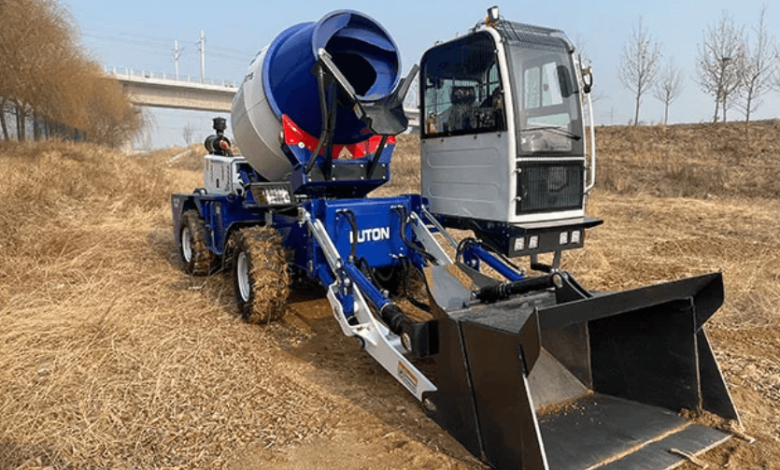self loading mixer: The Ultimate Productivity Booster for Remote and Rural Construction Projects

The construction industry often faces enormous logistical challenges when it comes to working in remote or rural areas. From a lack of infrastructure to limited labor availability, every step must be carefully coordinated to avoid delays, extra costs, and wasted resources. In such settings, the self loading mixer emerges as a game-changing solution—bringing unmatched mobility, independence, and productivity to even the most isolated job sites.
Gone are the days when concrete production in rural zones meant transporting raw materials to a distant batching plant, waiting in line, and dealing with transportation setbacks. With a self loading mixer, contractors can now take the entire mixing plant with them—ensuring consistent, high-quality concrete on-demand, right where it’s needed.
In this article, we’ll explore how the Self Loading Mixer enhances construction productivity in off-grid areas and why it’s quickly becoming an essential asset for forward-thinking builders.
Construction in Remote Areas: The Unique Challenges
Working away from cities brings several difficulties:
- Distance from batching plants or concrete suppliers
- Unreliable road infrastructure
- Labor shortages or high labor costs
- Limited access to electricity and heavy equipment
- Weather and seasonal delays
These challenges create significant inefficiencies for traditional construction workflows. Transport delays can compromise concrete quality, increase material costs, and derail project timelines.
That’s where the self loading mixer changes everything.
See also: Corporate Due Diligence: Safeguarding Business Decisions with Strategic Insights
How self loading mixers Boost On-Site Productivity
Let’s break down the productivity benefits in practical terms:
1. Mobility Means Freedom
Thanks to their all-terrain tires and 4×4 drive systems, self loading mixers can travel across unpaved roads, muddy fields, or hilly terrains. You don’t have to worry about transporting materials back and forth from a city-based batching plant.
2. No Dependency on Outside Suppliers
Delays caused by unreliable or overbooked ready-mix concrete providers become a thing of the past. Produce your own concrete, when and where you need it.
3. Fast Batch Production
Most models can produce 4–10 batches per shift depending on drum size. That’s enough to keep a small crew consistently working without breaks for concrete delivery.
Real-World Example: Rural Bridge Construction
A construction team is building a small bridge in a mountainous region, 80 km from the nearest concrete plant. Previously, they struggled with:
- Late deliveries due to road conditions
- Loss of concrete strength from delays
- Multiple crew members needed for unloading and pouring
After switching to a 3.5 m³ self loading mixer, they were able to:
- Produce fresh concrete on-site
- Eliminate reliance on third-party mixers
Fueling Sustainable Construction Practices
Remote construction is often criticized for its environmental impact, especially when multiple trips are needed to transport materials and concrete. The self loading mixer helps mitigate this by:
- Reducing vehicle trips (fewer emissions)
- Lowering material waste (precise batching)
- Using less fuel overall (compact and efficient engine systems)
- Minimizing concrete wastage (fresh batches reduce overproduction)
This makes it a great choice for companies committed to sustainable and green construction practices—even in rural environments.
Best Practices for Using a self loading mixer in Off-Grid Areas
To get the most from your self loading mixer, especially in areas with limited access to support or parts, follow these tips:
- Daily Maintenance Checks
Inspect fluid levels, tire pressure, and mechanical systems before starting operations. - Carry Essential Spares
Keep filters, hoses, and hydraulic fluid on hand to avoid downtime due to minor issues. - Train Local Operators
A short training session enables local laborers to safely operate the machine, reducing dependency on outside staff. - Plan Water Access
Ensure the machine’s tank is regularly filled from a nearby water source for consistent concrete quality.
Choosing the Right Model for Remote Use
If your primary operations involve remote or rural job sites, here’s what to consider:
| Selection Criteria | Ideal Configuration |
| Drum Capacity | 2.5–4.5 m³ depending on project scale |
| Power Source | Diesel engine with low fuel consumption |
| Mobility | 4WD and all-terrain wheels |
| Operator Comfort | Climate-controlled cab (for long work hours) |
| Weighting & Dosing | Integrated digital systems for efficiency |
Brands like Daswell, Carmix, Fiori, and Ajax offer models designed specifically for remote-use durability and performance.
Financing Options for Small Rural Contractors
If you’re a small contractor working in rural regions, purchasing a self loading mixer might seem like a big investment—but options are available:
- Low-interest equipment loans
- Installment payment plans from manufacturers
- Leasing-to-own models for gradual ownership
- Subsidies or grants for infrastructure projects (in some countries)
Given the productivity boost and long-term cost savings, many contractors find that the investment pays for itself within the first year of continuous use.
Conclusion: Remote Work Doesn’t Mean Compromised Efficiency
The self loading mixer is much more than a construction machine. It’s a mobility solution, a batch plant, a workforce multiplier, and a cost-reduction tool—all in one.
In regions where resources are stretched thin and access to services is limited, the self loading mixer offers the independence, flexibility, and efficiency that modern builders need. Whether it’s constructing homes, schools, bridges, or community centers in underdeveloped areas, this machine makes it possible to build with confidence and precision.
In short, if your business involves building in hard-to-reach places, the self loading mixer is your best companion on the road to productivity.




